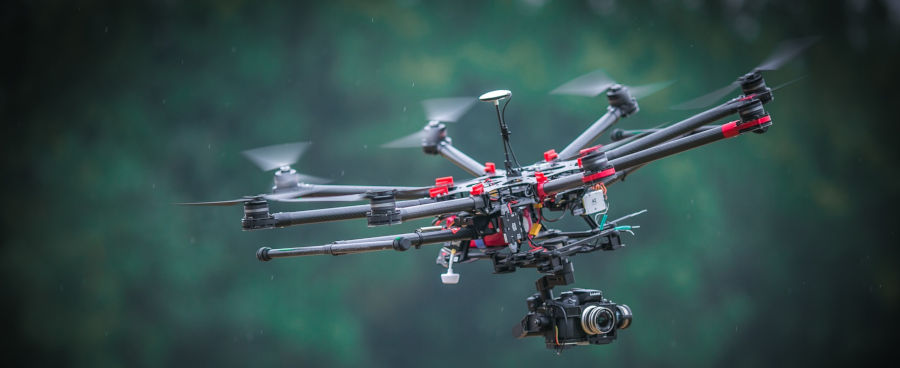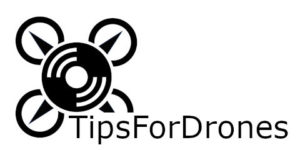Yesterday, I was talking with a friend about drones. After a few sentences, I realized that he was thinking about a toy and I was talking about rescue devices. After that, I wanted to explain the different terms to him, which is how I came to the conclusion that I don’t know them all myself. The next day, I did some research, and here is a summary.
What is the difference between a drone and a UAV? A drone is an unmanned vehicle operating in the air, on land, or underwater. A UAV is an unmanned aerial vehicle and therefore the kind of drone used in the air. The term “drone” is mostly used for remote-controlled multicopters and “UAV” for larger unmanned aerial vehicles with autopilots, such as military devices.
There are a lot of different terms for drones and UAVs as well as subgroups and hybrids. If you’re just getting acquainted with the topic, these shortcuts can be confusing.
Drone versus UAV
A drone is an unmanned vehicle that operates on its own or is remotely controlled. The term is basically used for machines that perform simple tasks at a distance from their controller. The controller can carry out the work itself or supervise the drone’s automatic movements via a camera. Drones can operate on land, in the air, or underwater.
Therefore, an RC car or a little robot is also a kind of drone, but the term is more used for fancy “land drones” like robots for bomb defusing or “underwater drones” for archaeologists. For air drones, the term is associated with military drones in the early 21st century. The global spread of quatrocopters since 2010 as model aircraft and toys has changed the meaning of the term “air drone” to multicopters.
A UAV is basically an air drone. The term was adopted by the US Department of Defense to refer to unmanned aircraft systems (UASs), which include ground control stations, data links, and other support equipment. The term “UAV” is generally used for bigger vehicles than for military or rescue machines.

Generally, a UAV is controlled by a professional pilot or a crew of a pilot and two sensor operators in the ground control station. Therefore, a UAV is basically a drone, but the usage of the term is different depending on the features of the aerial vehicle.
The distinction between the two words “drone” and “UAV” through the possibility of autopilot is now no longer appropriate. Due to improved computer performance, toy drones now have the possibility to independently fly routes via GPS.
There is also the possibility to distinguish these terms by the weight of the drone, but this distinction is more likely to be used by legislators and varies from country to country.
Personally, I use the term “drone” for my quadro, hexa, and octocopers, and for drones over 10 feet (3m), I use the term “UAV.”
Drones and their abbreviations
Every hobby contains a lot of abbreviations. For beginners it is especially difficult to navigate through the variety of abbreviations. Here is a list of the most important abbreviations and what they mean.
| BEC | Flight controllers can be powered directly by a battery using an inbuilt voltage regulator known as a battery eliminator circuit. |
| Blimp | A non-rigid airship that has no internal structure, like a zeppelin. The lifting gas (usually helium) contains pressure inside the envelope. The envelope itself and the lifting gas build the shape and ensure stability. |
| ESC | The motors onboard a UAV are controlled by an electronic speed controller. |
| FailSafe | The FailSafe is a mechanism to control the UAV in the event of a connection crash or if the battery reaches a critical voltage. |
| FC | The flight controller is the heart of every UAV and includes a microprocessor and an array of sensors to control most of the electrical onboard components. |
| FPV | The first-person view is a method used to control a UAV from the pilot’s point of view using a camera system and a live datalink of the video signal. |
| GCU | The gimbal control unit uses the data from the FC to control the movements of the gimbal. The term is used for DJI drones. |
| Gimbal | A gimbal is a pivoted support that enables the rotation of an object around a single axis. Generally, gimbals used for drones have three axes. |
| GPS | The global positioning system providing the geolocation of an object. |
| IOC | Intelligent orientation control is a system for changing the method of controlling the pitch and roll axles of the drone. Usually, there are three different methods with different coordinate systems. |
| OSD | The telemetry data of the drone can be overlayed to the FPV video signal, and the term stands for on-screen display. |
| PDB | The power distribution board distributes the power supply of the battery to the individual electronic speed controllers. |
| PID | The drone is controlled by a software control loop running on the flight controller. These calculus terms are proportional, integral, and derivative and serve to stabilize the UAV. |
| PMU | The power management unit manages and controls the power onboard. The term is used for DJI drones. |
| UAS | An unmanned aircraft system includes a UAV, ground control stations, data links, and other support equipment. |
| UAV | An unmanned aerial vehicle is a remotely controlled plane, multicopter, helicopter, Zeppelin, or blimp. |
| VTOL | An aerial vehicle that can perform vertical take-off and landing. The term can be used for multicopters and helicopters. |
| VTX | To save weight, some flight controllers have a video transmitter integration. |
Hybrids of drones
| Blimp-plane-drone | A blimp that has rotating wings with propellers and an extended tail. |
| UAV-VTOL-fixed-wing | A combination of a plane and a drone, mostly built with five motors—one for wing-flight and four for hovering. |
Does a drone need a pilot?

No, drones can usually start, fly, and land automatically. All they need is a GPS signal, an uploaded flight route, and a starting signal. After the start signal, the drone begins to hover and fly to the first GPS point autonomously. The flight route includes not only the GPS position but also the altitude, the speed of the drone, and in which direction the drone should be aligned.
When the drone reaches the end of the flight route, it hovers over the landing position and slowly starts to reduce its height. It usually descends at 1m/sec until it reaches the ground.
For industrial drones, this system can be used, for example, to transport medication between two hospitals in Zurich.
Generally, the autonomous flight of drones is strictly regulated or forbidden by law. Switzerland, however, is positive toward new drone devices and offers drone start-ups the opportunity to try out many things.
Do UAVs have weapons on board?
Unfortunately, yes, an observation flight of the US military with a Predator drone located Osama bin Laden in Afghanistan in 2000. Afterward, officials started asking, “Why can’t we put a missile on a drone?” The first weaponized Predators armed with Hellfire missiles started appearing after 9/11.
Since then, weaponized UAVs have been a standard device of military operations. Drones changed the character of war, and since 2009, the US has trained more drone operators than fighter or bomber pilots.

More information about the change of war are here.
More information about drone opterators are here.
Is it possible to hack a UAV?
Yes, there are many ways to hack a UAV and take control of the drone. Common ways to hack a drone are to simulate the flight-planning software or intervene between the remote controller and the drone. The question is always what the hacker wants to achieve. For more information, click here.
Can I fly a drone in bad weather?
That depends on the drone you’re using. If your drone is water-resistant, you can fly in rain or snow. Your drone has enough power and a high flight speed, you can also fly in a lot of wind. With the right

